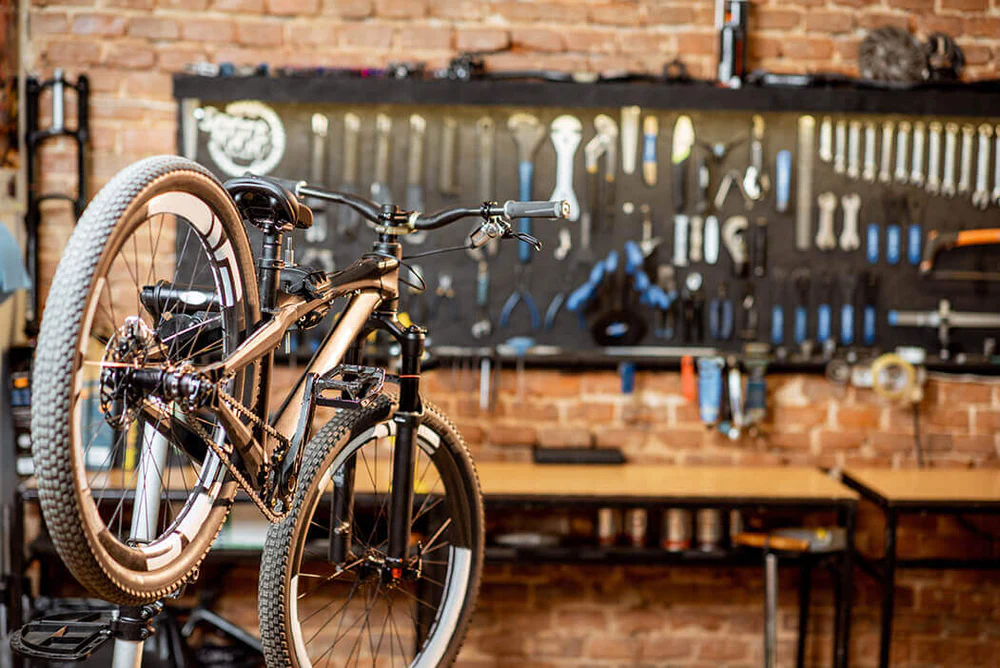Bicycles are celebrated for their simplicity and elegance. In an age of increasingly complex technology, the bicycle remains a human-powered machine, driven by straightforward mechanics. Despite modern enhancements like carbon fiber frames and electric motors, a bike still relies on basic components like wheels, gears, and brakes. However, even with its simplicity, a bicycle requires regular maintenance to ensure safety and peak performance, much like any other machine.
Whether you’re an experienced cyclist or just getting started, performing a few essential checks before every ride can prevent unexpected breakdowns and enhance your riding experience. Regular inspections can also help identify potential issues early, saving time and money on repairs. Here are five crucial checks to carry out before you head out on your next cycling adventure.

1. Tire Safety Check: Protect Your Ride
Ensuring that your tires are in optimal condition is one of the first steps in bike maintenance. Before every ride, inspect both the front and rear tires for debris like stones or glass shards. These objects can get lodged in the tire tread and, over time, cause flats. Make it a habit to check for such debris during your bike’s regular cleaning routine, removing any foreign objects with a tool like a flat-head screwdriver. If you spot any major damage, such as a large gash, it’s best to replace the tire to avoid problems during your ride.
The second part of tire maintenance is ensuring the tires are properly inflated. Under-inflated tires can decrease handling and performance, making your ride less enjoyable and potentially unsafe. Use a pump to inflate your tires to the recommended pressure before each ride. It’s easy to forget this simple step when rushing to ride, but keeping your tires properly inflated can make a significant difference in your bike’s performance.
2. Tighten All Bolts: Secure Your Ride
While your local bike shop will check the torque of your bike’s bolts during regular servicing, it’s wise to periodically check them yourself. Every bike has specific torque settings for its components, such as the stem or seat post, and using the correct amount of force is crucial for safety. A torque wrench or a set of fixed Nm wrenches can help you ensure that each bolt is tightened correctly, not too loose or too tight.
By going over your bike and checking each bolt, you can avoid potential mechanical issues during your ride. While this task may seem tedious, it’s an easy step that could prevent major accidents. Tightening your bolts to the manufacturer’s specifications ensures peace of mind, knowing that all parts are secure and functioning properly.

3. Shift Smoothly: Maintain Your Gears
Shifting gears properly is essential for a smooth and enjoyable ride. If your bike’s gears aren’t shifting smoothly, it can lead to frustrating rides and potential damage to the drivetrain. Start by testing your bike’s shifting, paying attention to whether the gears change smoothly and seamlessly. If there are issues, adjusting the derailleurs may resolve them. For mechanical drivetrains, check the cables, as they may need replacement if worn out. For electronic drivetrains, inspect the wiring and connections.
If after adjustments your shifting still feels off, it might be time to take your bike to a shop for a more detailed inspection. Proper shifting is crucial not only for convenience but also for the longevity of your bike’s components. A poorly adjusted drivetrain can cause unnecessary wear, ultimately leading to more costly repairs in the future.
4. Brake Inspection: Safety First
Your bike’s braking system is critical for safety, and it’s essential to check it regularly. Before you ride, perform a quick test by cycling around your neighborhood at a light pace. Pay attention to how the brakes feel and whether you can stop effectively when needed. If anything feels unusual, it’s time for a closer inspection. Begin by checking that your wheels are securely placed in the bike’s dropouts or thru-axles and spin them to ensure they rotate freely.
For bikes with rim brakes, check that the brake pads are not rubbing against the wheel rim when the wheel is spinning. For disc brakes, listen for unusual noises like the rotor rubbing against the brake pads. Additionally, inspect the brake pads for wear and replace them if necessary. Well-maintained brakes not only keep you safe but also enhance your bike’s overall performance, especially when descending or cornering.

5. Keep It Clean: Wash Your Bike Regularly
Maintaining a clean bike is more than just an aesthetic choice—it also plays a role in performance. Dirt and debris can cause unnecessary friction, wear down components, and affect the smooth functioning of your bike. At the very least, aim to wash your bike every month, though cleaning it more frequently can help prolong its lifespan. Use bike-specific cleaners and soaps to gently scrub the frame and components, removing any accumulated dirt.
Don’t forget to clean and degrease your chain and drivetrain, adding fresh lubrication afterward. A clean bike not only functions better, but it also gives you a sense of pride while riding. By taking the time to regularly clean your bike, you ensure it stays in top condition and is ready for the next adventure.
Performing these essential checks before each ride ensures that your bike stays in optimal condition and reduces the chances of mechanical issues during your ride. While regular servicing by a professional bike mechanic is important, taking the time to inspect your bike yourself can provide added confidence and peace of mind. These simple checks are quick to perform and can make a significant difference in your overall cycling experience.
By inspecting your tires, tightening bolts, adjusting shifting, checking brakes, and keeping your bike clean, you’ll be ready for any ride, from a short commute to an all-day adventure. The little effort you put into maintaining your bike will pay off in smoother rides, fewer repairs, and a safer cycling experience.

